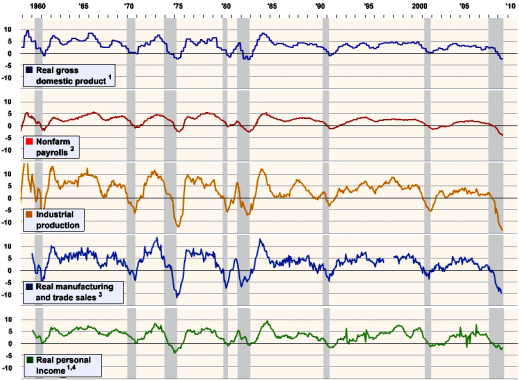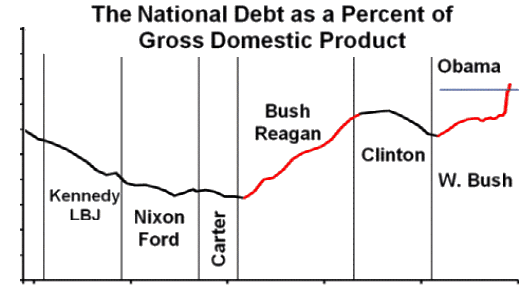That aside, by any parameter, this is the big one, particularly if you look at its duration. It has already outlasted its predecessors since [World War II] and it’s ongoing. While I hope the current mindset ["early recovery" versus "still falling"] is right, it’s going to be felt for a long time, and change the way Americans relate to money and saving. Likewise, if we’ve got any sense, we’ll return to investment in the Market as a growth tool rather than the only tool.
I obviously prefer Obama’s investment in America to Reagan/Bush tax-cuts for the rich, but over and beyond that, there’s the question of pay-back. Clinton gets Kudus for paying down the debt. I find these graphs interesting. One is the raw debt. The other is the debt "normalized" using the contemporary GDP.

We didn’t really pay off the post World War II debt. All we did was balance the budget, and inflation plus increases in the GDP paid it off for us [you have to look at it a while to see that.] The fallacy of the Reagan/Bush/Bush economics is obvious. They cut taxes and escalated the debt, even after the Recessions receeded. Obama has a really delicate road to travel here. He’s going to need to balance the budget in order to get the debt down. On the other hand, in order to avoid the 1937 mistake [see below], he’s going to have to continue to support the economy. He’s going to have to pass health care in order to get the people coverage. On the other hand, he’s going to have to cut the absurd costs of health care and pharmaceuticals which are and will be a major drain on the economy. He’s going to have to restrain the financial industry, yet insure a robust financial sector with liquid capital. It’s a tall order, made worse by the irresponsibility of his predecessors and their inflated National Debt.


Sorry, the comment form is closed at this time.